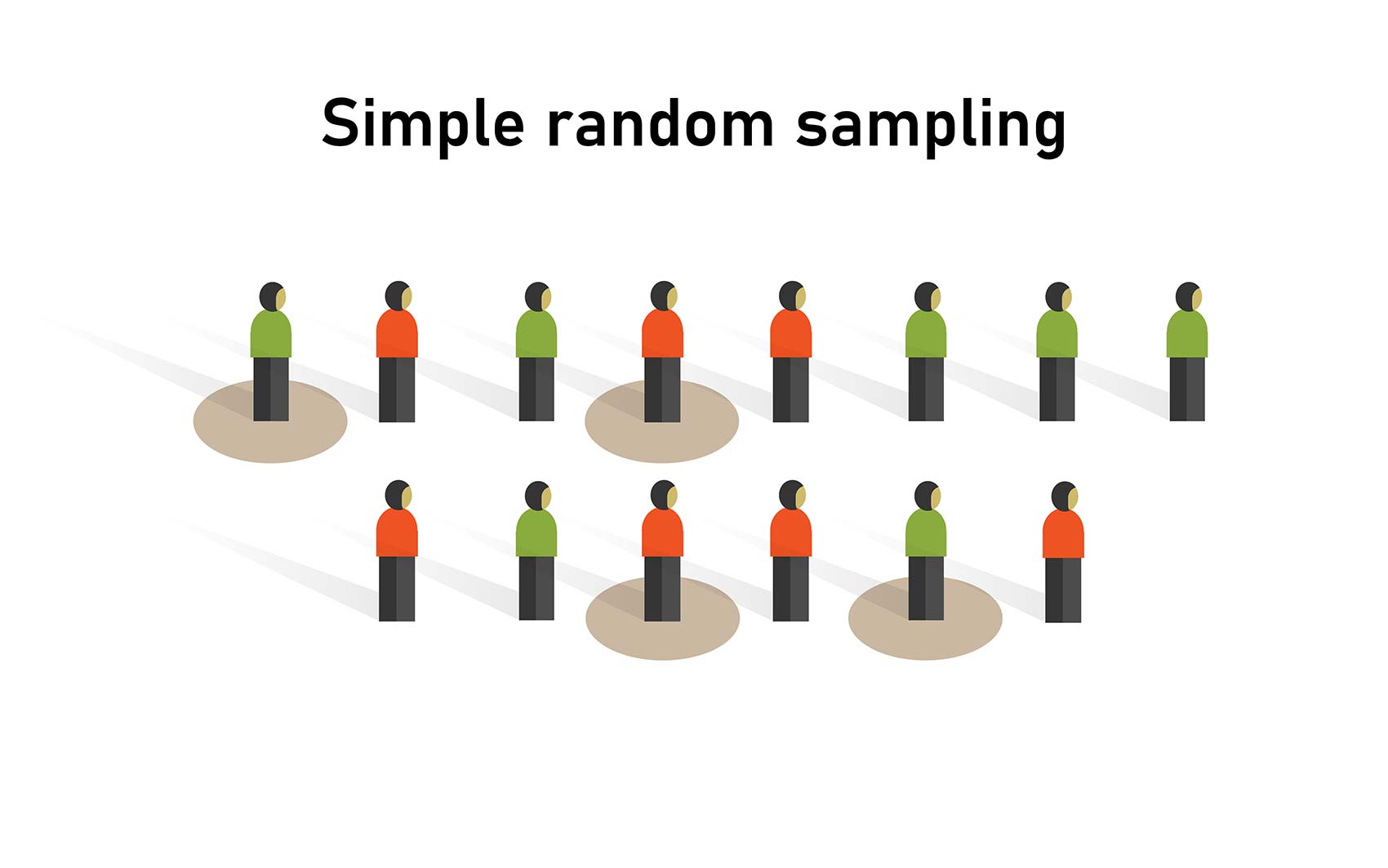
The random sampling method is one of the simplest and most common forms of collecting data, as it provides an unbiased representation of a group. The random subset of selected individuals represents an entire data set.
The goal of simple random sampling is to create a manageable, balanced subset of individuals that is representative of a larger group that would otherwise be too challenging to sample.
Example
For example, if you wanted to conduct a survey about food preferences in a school of 1000 students, and you wanted to sample 100 students.
You could use simple random sampling by assigning each student a number from 1 to 1000, then using a random number generator to pick 100 numbers.
The students assigned those numbers would be the ones you survey.
Method
- First, choose the target population that you wish to study and determine your desired sample size. The smaller the sample size the less likely, it can be generalized to the wider research population and is unlikely to be fully representative.
- The list of the people from which the sample is drawn is called the sampling frame. Examples of sampling frames include the electoral register, schools, drug addicts, etc.).
- Then, assign a sequential number to each subject in the sampling frame.
- Next, individuals are selected using an unbiased selection method. Some examples of simple random sampling techniques include lotteries, random computer number generators, or random draws.
Advantages
Minimizes Bias
It is the least biased sampling method, as every member of the target population has an equal chance of being chosen. The purpose of simple random sampling is to give each individual an equal chance of being chosen.
This is meant to represent a group that is free from researcher bias. Like any sampling technique, there is room for error, but this method is intended to be an unbiased approach.
Representativeness
Random sampling ensures that every member of the target population has an equal chance of being selected. This helps to ensure that the sample is representative of the population, making it more likely that the findings can be generalized to the entire population.
Limitations
Expensive and time-consuming
It is a very expensive and time-consuming method; it is difficult to get the name of every member of the target population, especially if it is a very large population, so it is rarely used.
Access to respondents
This is actually quite hard to achieve – especially if the parent population is large. Since the participants do not volunteer to participate, it can be challenging for researchers to gain access to respondents when drawing from a large population.
Sampling error
Sampling errors can occur when the sample does not accurately represent the population as a whole. If this occurs, the researcher would need to restart the sampling process.
Other techniques
There are four types of random sampling techniques (simple, stratified, cluster, and systematic random sampling.
Stratified Random Sampling
- In stratified random sampling, researchers will first divide a population into subgroups, or strata, based on shared characteristics and then randomly select among these groups.
- This method is typically used when a population has distinct differences, such as demographics, level of education, or age, and can easily be broken into subgroups.
Cluster Random Sampling
- Similar to stratified random sampling, cluster random sampling begins by dividing a population into smaller groups.
- However, in cluster sampling, researchers use naturally formed groups to divide a large population up into clusters and then select randomly among the clusters to form the sample.
- Examples of these pre-existing groups could include school districts, city blocks, or households.
Systematic Random Sampling
- Systematic random sampling involves taking random samples at regular periodic intervals.
- For example, if you were conducting a survey in a cafeteria, you could give a survey to every sixth customer that comes into the cafeteria.
Key Terms
- A sample is the participants you select from a target population (the group you are interested in) to make generalizations about. As an entire population tends to be too large to work with, a smaller group of participants must act as a representative sample.
- Representative means the extent to which a sample mirrors a researcher’s target population and reflects its characteristics (e.g., gender, ethnicity, socioeconomic level). In an attempt to select a representative sample and avoid sampling bias (the over-representation of one category of participant in the sample), psychologists utilize various sampling methods.
- Generalisability means the extent to which their findings can be applied to the larger population of which their sample was a part.
References
Hayes, A. (2021). Simple Random Sample. Investopedia. Retrieved from https://www.investopedia.com/terms/s/simple-random-sample.asp
Simple random sample: Definition and examples. Statistics How To. (n.d.). Retrieved from https://www.statisticshowto.com/probability-and-statistics/statistics-definitions/simple-random-sample/
Simple random sampling: Definition, examples, and how to do it. Qualtrics. (2022). Retrieved from https://www.qualtrics.com/experience-management/research/simple-random-sampling/ nce-management/research/simple-random-sampling/


